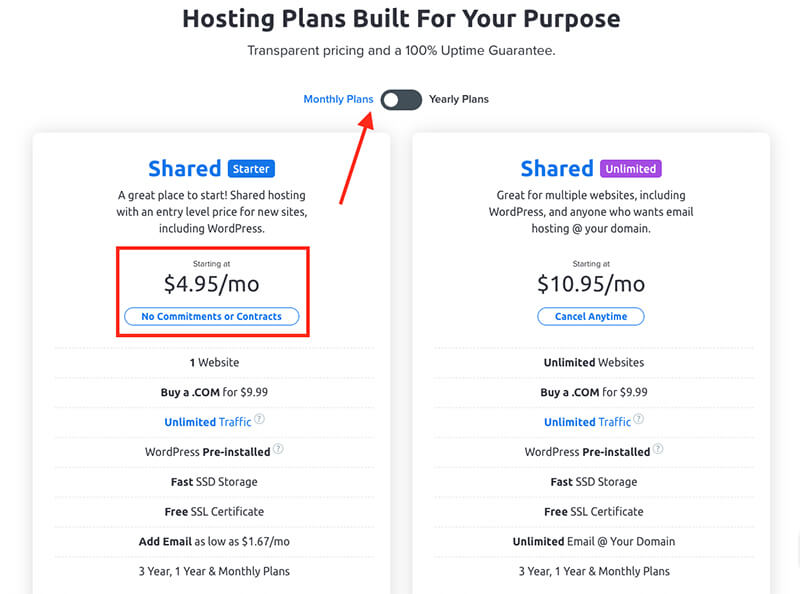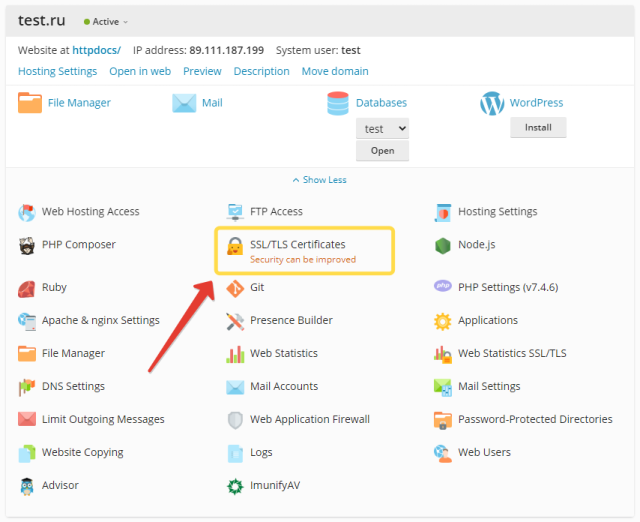
If you've encountered a warning that says "Nginx does not support SSL certificates", you can easily fix the problem by installing an SSL certificate. To do so, you will need to install the SSL certificate on each server and device. In this article, we will explain how to create an SSL CSR.
Warning about configuration of nginx SSL certificate
You may get an nginx SSL certificate setup warning if you use SSL certificates on your website. This message tells you that your server cannot use HTTPS. It means that your certificate doesn't match the domain name that is listed in the browser address bar. To fix this issue, configure your server so that it uses HTTPS.
Installing a SSL certificate on NGINX is the first step. A certificate authority can issue an SSL certificate. An online search will provide you with the contact information of a certificate authority. You should restart your server once you have received the certificate.
Installing an SSL Certificate
You can secure your website by installing an SSL certificate to your Nginx webserver. This will make it safer for your customers and increase your website's security. First, download the intermediate certificate bundle files from a repository and then install it. After you have the files, configure Nginx in order to use the certificate. The configuration will depend on the Nginx version and OS platform.

For every web server that supports HTTPS, an encrypted protocol that encrypts data transmitted between the webserver and the browser, SSL certificates must be installed on NGINX. To install a certificate on your NGINX webserver, you must first download it from the Let's Encrypt website. You should install it on your server and make sure to enable HTTPS on the NGINX configuration file.
Creating a CSR
You can create a CSR to configure nginx's SSL certificates in a variety of ways. CSR creation is essential for SSL certificate configuration. Creating a CSR will allow you to submit the request for a new certificate to the certificate authority. This certificate will enable Nginx offer HTTPS service for your visitors.
The private key for the SSL certificates can be saved in the same directory as the SSL certificate. However, it is recommended to keep the private key separate from the certificate. You can limit the ciphers or protocols that are used in an SSL connection by using nginx’s “ssl_protocols” property.
Use the DigiCert OSR Wizard
The first step to setting up an SSL certificate for Nginx is to generate a CSR. OpenSSL can be used to create the CSR. Once you have created your CSR, you are able to install the certificate on Nginx. You must restart Nginx after the SSL certificate has been installed.
Once you have generated the CSR, you need to save it in a directory that contains your SSH files. Next, enter the name, location, and state of the organization. If you wish, you can also add a two letter country code. For additional security, you can use a passphrase and password. You should save the CSR in the same directory that you keep your SSH keys. A backup copy of the file ".key" will be required.

How to create a private key
Creating a private key is one of the most important steps in setting up SSL on Nginx. SSL must function correctly and your server should be protected against all types of vulnerabilities. The default SSL configuration may be sufficient to get the job done. Here are some ways to increase the security of your SSL configuration.
First, you will need to create a private secret key for the SSL certificate that you are installing. You can use Let'sEncrypt to create a new private key. A certificate that has a short expiry period is recommended (let's say, 90 days for Let'sEncrypt certificates). After your certificate expires you will need to generate a new private keys and obtain one from your CA. You should renew your certificate regularly to reduce your risk of a private key compromise.
FAQ
How to Create a Static Website
There are two options available to you when building your first static website.
-
A Content Management System (also known as WordPress): WordPress is a Content Management System (a.k.a. This software can then be used to create an indispensable website.
-
Create a static HTML website: You'll need to code your HTML/CSS code. It's not hard to do if you already understand HTML.
You might consider hiring an expert to design your website if you are planning to build a large site.
However, it is a good idea to start with option 2.
Where can you find freelance web developers?
Many places have freelance web developers and designers. These are the top options:
Freelance Sites
These sites offer job postings for freelance professionals. Some sites have very specific requirements while others do not care about what kind of work you do.
Elance, for instance, has high-quality job opportunities for programmers, writers, translators, editors and project managers.
oDesk also offers similar features, but focuses more on software development. They offer jobs in PHP, Perl, Java, C++, Python, JavaScript, Ruby, iOS, Android, and.NET developers.
Another option is oWOW. Their site focuses primarily on web designers and graphic design. They also offer video editing, writing, programming, SEO, social media marketing, and many other services.
Forums Online
Many forums allow members to post jobs and advertise themselves. DeviantArt is a forum for web developers. You can search for "web developer" using the search bar to see a list threads in which people are seeking help with their websites.
How much do web developers make?
Working on a website yourself will likely earn you between $60 and $80 an hour. If you are looking to make more money, it is worth considering becoming an independent contractor. The hourly rate could be anywhere from $150 to $200
Statistics
- Studies show that 77% of satisfied customers will recommend your business or service to a friend after having a positive experience. (wix.com)
- At this point, it's important to note that just because a web trend is current, it doesn't mean it's necessarily right for you.48% of people cite design as the most important factor of a website, (websitebuilderexpert.com)
- Did you know videos can boost organic search traffic to your website by 157%? (wix.com)
- It's estimated that chatbots could reduce this by 30%. Gone are the days when chatbots were mere gimmicks – now, they're becoming ever more essential to customer-facing services. (websitebuilderexpert.com)
- It enables you to sell your music directly on your website and keep 100% of the profits. (wix.com)
External Links
How To
How to use WordPress for Web Design
WordPress is a software application that you can use to build websites or blogs. It has many great features, including easy installation, powerful themes options, plug-ins and many other. You can customize your website using this website builder. It comes with hundreds of themes and plugins that help you make any site. You can also add your domain to the site. All of these tools make it easy to manage your website's appearance and functionality.
WordPress allows you to create beautiful websites even if you don't know how to code HTML. You don't need to know any programming skills to create a professional-looking website. In this tutorial, we'll show you how to install WordPress on your computer and then walk through some basic steps to get your new blog online. We will explain everything so that you can easily follow along at your own pace.
WordPress.com is the most well-known CMS (Content Management System). There are currently 25 million users worldwide. There are two versions of WordPress. You can choose to either buy a license at $29 per month, or download the source code and host your site for free.
WordPress is an excellent blogging platform for many reasons. One reason is that WordPress is extremely easy to use. Anyone with a basic knowledge of HTML can create a stunning site. Another benefit is its flexibility. WordPress.org provides many themes free of charge. You can easily change the look and feeling of your site without spending a dime. Finally, it's highly customizable. Premium add-ons are available from many developers that allow you automatically to update posts when someone comments, or integrate social networking sharing into your site.